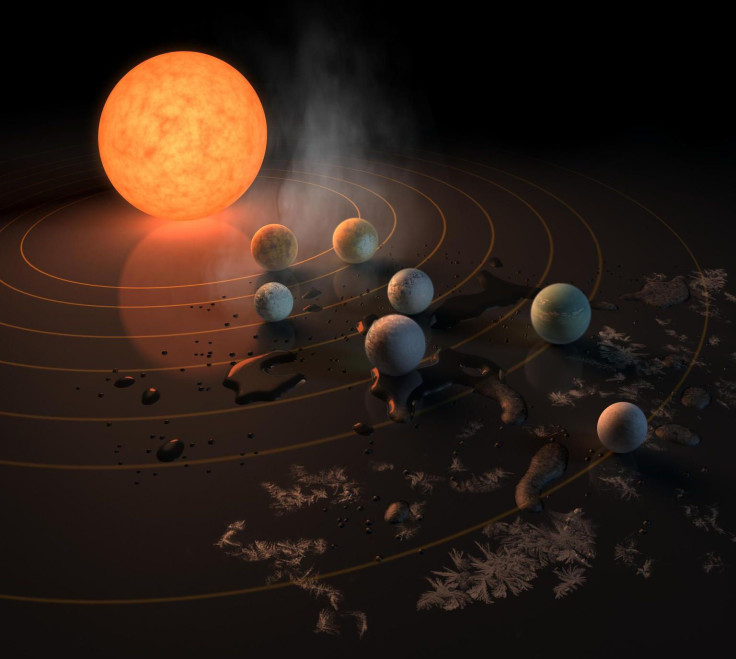Alien Life On TRAPPIST-1: Planets Close Enough For Travel

The Earth-sized planets in the TRAPPIST-1 solar system are so close together that it would be easy for alien life to hitch a ride on some space debris, transfer between them and spread, astronomers say.
That debris would come from a collision — an asteroid, for example, crashing into one of the exoplanets. The crash would send material flying, perhaps with microorganisms like bacteria still living on it, into outer space and it could land on a nearby planet. A study in the Astrophysical Journal Letters says that process, called “lithopanspermia,” could happen quickly when planets are close together.
Read: The Aliens Are Probably Swimming, Not Walking
Close together exactly describes the exoplanets in the TRAPPIST-1 system. Scientists announced earlier this year that they had discovered the seven rocky Earth-sized planets, three of which are in their star’s “habitable zone,” the distance at which the planet would have the right temperature to support liquid water. But being in that liquid water zone still puts the trio close to the gas and ice zones — their star is of a relatively cool temperature so they all orbit closer than Mercury does to our sun without getting scorched.

NASA has described exactly how close the planets are: “If a person were standing on one of the planet’s surface, they could gaze up and potentially see geological features or clouds of neighboring worlds, which would sometimes appear larger than the moon in Earth's sky.”
For life forms to be transferred from one exoplanet to the next, the debris ejected in an asteroid collision would have to be big enough to protect the aliens from outer space during the transfer, according to the University of Chicago, whose scientists worked on the project. They would also need a certain Goldilocks-type speed — the space debris would have to move fast enough to escape the gravitational pull of the first planet but not too fast that it kills the bacteria. “And the journey would have to be relatively short so the life form could survive.”
Based on simulations, the researchers say a successful transfer could happen in as little as 10 years, given the optimal conditions at TRAPPIST-1.

“Frequent material exchange between adjacent planets in the tightly packed TRAPPIST-1 system appears likely,” the study’s lead author, Sebastiaan Krijt, said in the UChicago statement. “If any of those materials contained life, it’s possible they could inoculate another planet with life.”
It’s not as outlandish as it sounds — space debris reaches Earth all the time, and it’s possible that material ejected from Earth in a collision earlier in its history is out there somewhere too, maybe even carrying a microorganism that will one day land on another planet and proliferate.
“Given that tightly packed planetary systems are being detected more frequently, this research will make us rethink what we expect to find in terms of habitable planets and the transfer of life — not only in the TRAPPIST-1 system, but elsewhere,” co-author Fred Ciesla, a UChicago geophysical sciences professor, said in the university statement. “We should be thinking in terms of systems of planets as a whole, and how they interact, rather than in terms of individual planets.”

The TRAPPIST-1 solar system is only 40 light years away from Earth. If extraterrestrial life were to exist on one of the seven exoplanets there, it may not be uniform all over the planet. According to NASA, it’s possible the seven worlds orbit such that the same side is always facing their little star, which means one side of the planet would exist only in daylight and the other side only in the dark of night. That type of orbit would also mean some weird weather.
See also:
© Copyright IBTimes 2024. All rights reserved.




















